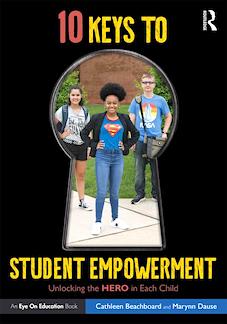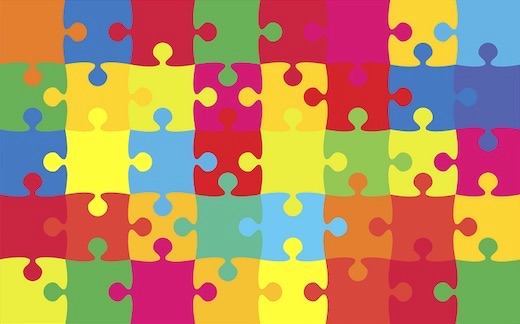Supporting the Emotional Health of Our Students
I do a weekly check-in survey for students asking what they could use from me – a lot more virtual hugs this week than previous weeks. The kids are not all alright.” – Tweet from teacher-author @PernilleRipp, May 19.
This pandemic is affecting everyone. For most of us, it has overturned our entire lives. Families are going through loss of income and jobs, important projects have halted, special occasions go unnoticed, people are going hungry.
Many of us have gone months (and counting) without a supportive hug from friends and loved ones. A vaccine could be more than a year away, and we can’t predict what “school” will be like in the fall.
What was “normal” has been eradicated, and this large-scale disaster has triggered a chain of psychological phenomena for our students that can have lasting impact. We need to help them develop a framework for mental health and emotional safety during and after this pandemic.
Think about this: the moment our students’ normal lives were shattered, their sense of safety in the world began to diminish. Having the stress pathway of the brain constantly on high alert from trauma leads to anxiety, increased reactivity, and impaired learning and memory.
If not kids are not helped over the course of time, this trauma can cause lifelong damage to their mental, emotional, and physical well-being. While there’s still no current treatment for Covid-19, there are effective tools to help our students deal with this trauma, create new neuropathways to handle stress, and safeguard their mental health.
A Three-Sided Framework
A framework of safety is critical for helping our students’ decrease traumatic stress and regain security. We can help our young people reclaim their sense of safety and foster neuropathways of healing by utilizing three Cs: communication, consistency, and control.
Communication: A Way to Express Feelings and Get Help
According to a study done by researchers at the University of California in 2007 (“Putting Feelings into Words”) simply allowing people the opportunity to talk about their feelings can decrease the impact of traumatic stress on the brain.
One way we can deploy this trauma-informed approach is by using a mental health check-in system. Set up a mental health check-in tool (a board, a Google form, a dedicated app) for students to indicate how they’re feeling. Assign each student a number and allow them to use the check-in space to mark if they are feeling okay, feeling a bit down and need a chat soon, or need immediate help now.

If a student needs immediate help, consider utilizing the school counselor. If a student wants to just touch base, give them a time during the day that they can hook up and talk to you. By starting online or physical classes with this quick activity, we give our students the chance to talk, label their feelings, and provide them with support to work through feelings. This simple step helps ensure students are mentally ready to learn and reinforces the sense that they are in a safe, caring learning environment.
Consistency: Reliability Helps the Brain Relax
Our consistency toward our students and young people is reparative, meaning it helps them regain their sense of trust in the people and world around them. The Trauma Responsive Educational Practice Project states that when we are consistent as educators we establish a sense of predictability for the student that produces a feeling of safety. In our classrooms consistency can be established by co-creating and sticking to procedures and schedules.
By co-creating rules and procedures with students, we allow them to communicate their ideas and thoughts and ask questions about the classroom procedures. This process also allows the teacher to create a solid framework students can understand and can follow easily in the classroom.
Sticking to a consistent pattern of procedures in the classroom allows the brain to relax. It provides comfort to students through reliability, which gives the brain a stronger feeling of security. The more consistency we provide in the classroom the more willing the brain is to let its defenses down so that our students can focus on learning, growing, and thriving.
Control: We can take care of ourselves
According to the Manitoba Trauma Recovery & Education Center, “Central to the experience of trauma is helplessness, isolation and the loss of power and control.”
Students feel as if they have no power with the unpredictability tied to this pandemic. One of the ways to combat this feeling and help students regain their sense of control is to have them create a self-care plan.
A self-care plan helps us avoid being overwhelmed when traumatic stress hits. Students will know what to do and where to turn when they feel overwhelmed. Helping students develop these plans also gives us additional insight into strategies, tools, and support structures that are effective in a moment of emotional crisis.
To start a self-care plan, have students list activities and things they already do that help themselves feel better anytime they are feeling a little down. Consider modeling a list of your own activities – with examples like exercise, playing games, listening to music, meditating, coloring, journal writing, reading favorite authors or nonfiction topics, or crafting.
After they have listed a few activities, students should create a list of people who support them and they could go to for help. If a student has trouble coming up with a list of helpers, talk with them about people they interact with daily who are friendly and supportive. Encourage them to pinpoint their caring relationships.
Once students have compiled these lists of diverting activities and supportive people, have them create a list of their stressors – possible triggers that might cause them stress. This will help them become alert to times when they might utilize their self-care plan. Triggers might include moments before class or an online learning session, or when their parents watch the news, or when they are trying to get ready in the morning, or thinking about their friends they can’t see. Then assist students to tailor positive responses to certain triggers.
As students create these self-care plans, they will begin to see that they are capable of exerting some control over how they respond to any stressor in their life. This will in turn increase their sense of control and promote self-confidence in the face of stress.
Conclusion
The future may be uncertain, but the mental health of our students shouldn’t be. Through a focus on the three C’s we can begin to help our students find the courage to take control of their mental well-being, build resilience, and regain their sense of safety.
Utilizing some simple trauma-informed approaches can help get our students past a state of simply surviving to periods when they are mentally thriving – ready to learn and grow and face an uncertain world with new confidence.
Cathleen Beachboard has been an instructional coach, professional developer and speaker. She currently teaches 8th grade English Language Arts at Taylor Middle School in Fauquier County VA where she also serves as the Lead Mentor and English Department head.








































Thank you, this is amazing.